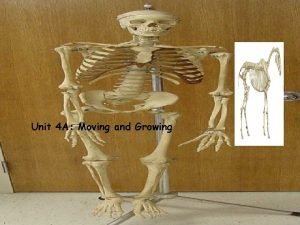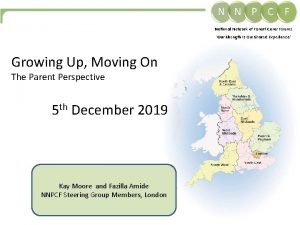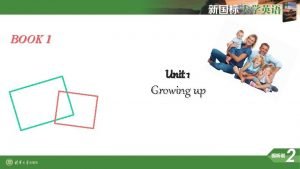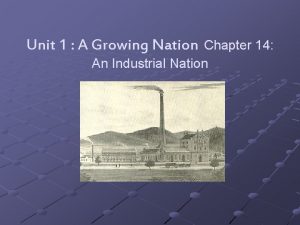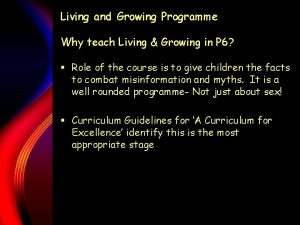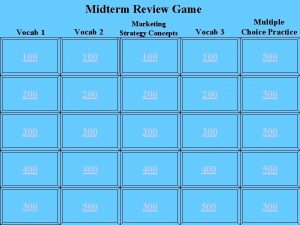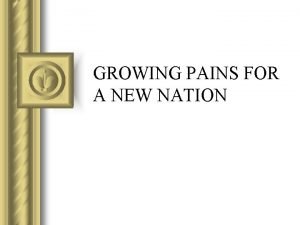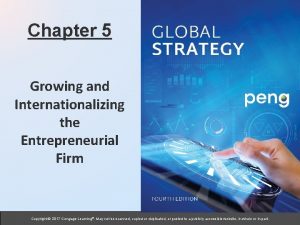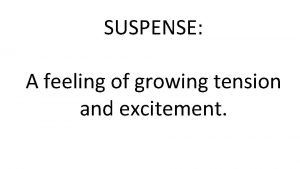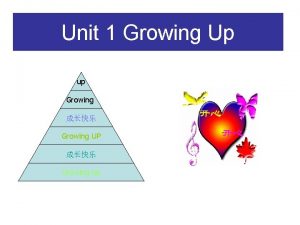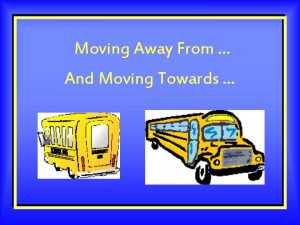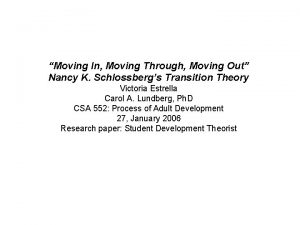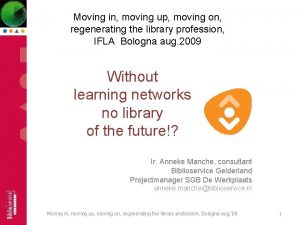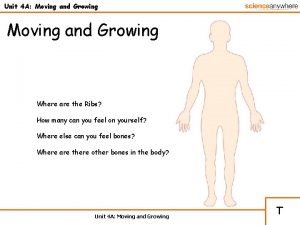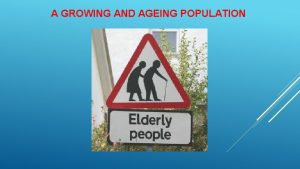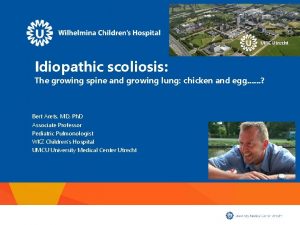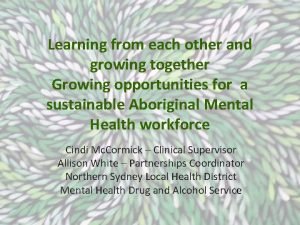Unit 4 A Moving and Growing Unit 4











- Slides: 11

Unit 4 A: Moving and Growing Unit 4 F: Simple circuits: L. O. 1, 2: N. C. 4. 1 a

Unit 4 A: Moving and Growing Where are the Ribs? How many can you feel on yourself? Where else can you feel bones? Where are there other bones in the body? Unit 4 A: Moving and Growing

Unit 4 A: Vocabulary Some useful words Ribs The bones that protect the lungs and other major organs. Humans have 12 on each side. Spine Sometimes called the backbone. It’s actually made up of lots of ring shaped bones. Skull The bone that protects the brain. Contract/ Contraction To get shorter, muscles contract to move bones Relax When a muscle relaxes it gets longer Vertebrate Sometimes called the spine Unit 4 A: Vocabulary

Unit 4 A: Skeletons Horse Human Dog Can you see any similarities between the different skeletons? Can you see any differences between the different skeletons? Unit 4 A: Skeletons: L. O. 1, 2: N. C. 1. 2 e

Unit 4 A: Bones Use words from below that best describe bones hard weak strong rough smooth solid brittle hollow same shape different shapes Unit 4 A: Bones: L. O. 3: N. C. 2. 2 e

Unit 4 A: The Skeleton Child Skeleton Unit 4 F: The Skeleton: L. O. 4: N. C. 2. 2 e Adult Skeleton

Unit 4 A: Differences in skeletons investigation 1. Who has the longest arms, boys or girls? 2. Are adult’s heads bigger than children’s heads? Select one question to investigate: What do you think you will find and why do you think this? (This is your prediction) How are you going to collect evidence? What will you measure each time? What apparatus will you use to take your measurements? How will you ensure this evidence is reliable? How will you record the results? What do your results show? Does this support your prediction? Unit 4 A: Differences in skeletons investigation: L. O. 5, 6, 7, 8: N. C. 1. 2 e, f, h

Unit 4 A: What does the Skeleton do? : L. O. 9: N. C. 2. 2 e D

Unit 4 A: How does the Skeleton move? : L. O. 10, 11: N. C. 2. 2 e

Unit 4 A: The effect of Exercise The Effect of Exercise Activity Breathing Rate Temperature Unit 4 A: The effect of exercise: L. O. 13, 14: N. C. Other

Unit 4 A: Summary S Humans n A ome Animals with skin ls ima Dogs have muscles Cats Sk ele ton s Attached to bone Contract (shorten) to move bone Moving and Growing Bo dy Similarities Differences Work in pairs les c us M Work hard when exercising Unit 4 A: Summary Support and protect
 Skeleton systm
Skeleton systm Growing up and moving on
Growing up and moving on Unit 1 growing up
Unit 1 growing up Unit 2 resources a growing nation
Unit 2 resources a growing nation Living and growing how babies are made
Living and growing how babies are made Chapter 15 manifest destiny and the growing nation
Chapter 15 manifest destiny and the growing nation Building keeping and growing profitable value-laden
Building keeping and growing profitable value-laden A new nation and its growing pains review
A new nation and its growing pains review Growing and changing
Growing and changing Five entrepreneurial strategies
Five entrepreneurial strategies Tension or excitement
Tension or excitement Tell something about the multimodal text big ed mona
Tell something about the multimodal text big ed mona
